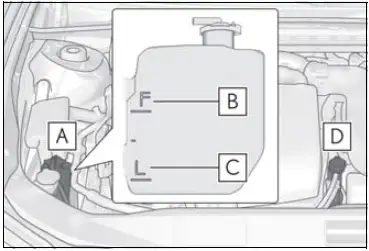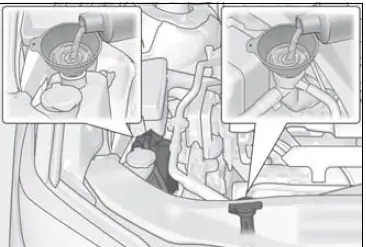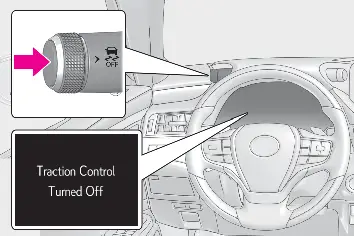Lexus ES350 2023 Engine Overheat User Manual
Introduction
As soon as you can, pull over to the side of the road or another secure area.
Switch off the engine and give it time to cool. When the engine is hot, avoid attempting to open the radiator cap because doing so could cause scalding coolant or steam to escape.
Examine the cooling system visually after the engine has cooled to look for any obvious leaks, damage, or obstructions.
Verify the radiator’s or the coolant reservoir’s coolant level. If necessary, add coolant in accordance with the manufacturer’s instructions if it is low.
If the coolant level appears to be adequate and the cooling system seems to be in good shape, it is advisable to call a qualified technician or request roadside assistance for additional diagnosis and repair.
In conclusion
Even though the Lexus ES350 2023 is built to deliver a dependable and effective driving experience, engine overheating can happen occasionally. You can safeguard the integrity of your car’s engine and keep enjoying the exceptional performance and comfort that the Lexus ES350 2023 offers by being aware of the reasons behind, symptoms to look out for, and steps that need to be taken to address engine overheating.
Engine Overheat
If your vehicle overheats
The following may indicate that your vehicle is overheating.
- The engine coolant temperature gauge is in the red zone or a loss of engine power is experienced. (For example, the vehicle speed does not increase.)
“Engine Coolant Temp High Stop in a Safe Place See Owner’s Manual” is shown on the multi-information display.
Steam comes out from under the hood.
Correction procedures
- Stop the vehicle in a safe place and turn off the air conditioning system, and then stop the engine.
- If you see steam:
Carefully lift the hood after the steam subsides.
If you do not see steam: Carefully lift the hood. - After the engine has cooled down sufficiently, inspect the hoses and radiator core (radiator) for any leaks.

![]() Radiator
Radiator
![]() Cooling fan
Cooling fan
If a large amount of coolant leaks, immediately contact your Lexus dealer.
- The coolant level is satisfactory if it is between the “F” and “L” lines on the reservoir.
2GR-FKS engine

![]() Reservoir
Reservoir
![]() “F” line
“F” line
![]() C “L” line
C “L” line
![]() Coolant inlet cap
Coolant inlet cap
A25A-FKS engine

![]() Reservoir
Reservoir
![]() “F” line
“F” line
![]() “L” line
“L” line
![]() Coolant inlet cap
Coolant inlet cap
- Add coolant if necessary.
2GR-FKS engine
Water can be used in an emergency if coolant is unavailable.

A25A-FKS engine
Water can be used in an emergency if coolant is unavailable

- Start the engine and turn the air conditioning system on to check that the radiator cooling fan operates and to check for coolant leaks from the radiator or hoses.
The fan operates when the air conditioning system is turned on immediately after a cold start. Confirm that the fan is operating by checking the fan sound and air flow. If it is difficult to check these, turn the air conditioning system on and off repeatedly.
(The fan may not operate in freezing temperatures.) - If the fan is not operating: Stop the engine immediately and contact your Lexus dealer.
If the fan is operating:
Have the vehicle inspected at the nearest Lexus dealer.
WARNING
When inspecting under the hood of your vehicle
Observe the following precautions. Failure to do so may result in serious injury such as burns.
- If steam is seen coming from under the hood, do not open the hood until the steam has subsided. The engine compartment may be very hot.
Keep hands and clothing (especially a tie, a scarf or a muffler) away from the fan and belts. Failure to do so may cause the hands or clothing to be caught, resulting in serious injury.
While the engine and radiator are hot, do not loosen or remove the coolant inlet cap or coolant reservoir cap. High temperature steam or coolant could spray out.
NOTICE
When adding engine coolant
Add coolant slowly after the engine has cooled down sufficiently. Adding cool coolant to a hot engine too quickly can cause damage to the engine.
To prevent damage to the cooling system
Observe the following precautions:
- Avoid contaminating the coolant with foreign matter (such as sand or dust etc.).
- Do not use any coolant additive.
If the vehicle becomes stuck
Carry out the following procedures if the tires spin or the vehicle becomes stuck in mud, dirt or snow:
Recovering procedure
- Stop the engine. Set the parking
brake and shift the shift lever to P. - Remove the mud, snow or sand from around the front wheels.
- Place wood, stones or some other material under the front wheels to help provide traction.
- Restart the engine.
- Shift the shift lever to D or R and release the parking brake. Then, while exercising caution, depress the accelerator pedal.
When it is difficult to free the vehicle
Press the switch to turn off TRAC.

WARNING
When attempting to free a stuck vehicle
If you choose to push the vehicle back and forth to free it, make sure the sur-rounding area is clear to avoid striking other vehicles, objects or people. The vehicle may also lunge forward or lunge back suddenly as it becomes free. Use extreme caution.
When shifting the shift lever
Be careful not to shift the shift lever with the accelerator pedal depressed.
This may lead to unexpected rapid acceleration of the vehicle that may cause an accident resulting in death or serious injury.
NOTICE
To avoid damaging the transmission and other components
- Avoid spinning the front wheels and depressing the accelerator pedal more than necessary.
If the vehicle remains stuck even after these procedures are performed, the vehicle may require towing to be freed.
FAQs
- What are the common causes of engine overheating in the Lexus ES350 2023?
A faulty thermostat, low coolant levels, a blocked radiator, extreme driving conditions, and malfunctioning cooling system components are some common causes of engine overheating. - What should I do if the engine temperature gauge in my Lexus ES350 2023 starts rising?
It’s crucial to stop in a safe location, turn off the engine, and let it cool down if the engine temperature gauge starts to rise. When the engine is hot, avoid removing the radiator cap. - Can I continue driving my Lexus ES350 2023 if the engine is overheating?
Driving your car while the engine is overheating is not advised because it could result in serious damage. It is best to stop and deal with the problem right away. - How long should I wait for the engine to cool down before opening the radiator cap?
It is advised to let the engine cool for at least 30 minutes before attempting to open the radiator cap. By doing so, the system can release accumulated pressure without risk of injury from steam or coolant. - What should I do if I notice a coolant leak in my Lexus ES350 2023?
A coolant leak must be fixed right away if you notice one. Examine the leak’s source, then get in touch with a qualified technician to find the problem and fix it. - Can I add water to the radiator if I don’t have coolant available?
In an emergency, filling the radiator with water can assist in momentarily cooling the engine. To maintain proper system functionality, it must be replaced as soon as possible with the suggested coolant. - How often should I check the coolant level in my Lexus ES350 2023?
It is wise to regularly check the coolant level, particularly before lengthy trips or during routine maintenance inspections. For the suggested intervals, adhere to the manufacturer’s instructions. - Can a malfunctioning thermostat cause engine overheating?
Yes, a broken thermostat can make the engine overheat by either remaining closed and preventing coolant flow or remaining open and improperly controlling temperature. - Can driving at high altitudes contribute to engine overheating in the Lexus ES350 2023?
Driving at high altitudes can put the engine and cooling system under more stress, which could result in overheating. Monitoring engine temperature is crucial, and driving conditions should be changed accordingly. - Is engine overheating covered under the vehicle’s warranty?
You can avoid engine overheating by performing routine maintenance like checking the coolant level, inspecting the cooling system, and taking care of any problems right away. In addition, exercising caution while driving and avoiding hazardous conditions can help with prevention. - Can I use an engine coolant additive to prevent engine overheating?
Regular maintenance, such as checking coolant levels, inspecting the cooling system, and addressing any issues promptly, can help prevent engine overheating. Additionally, driving with care and avoiding extreme conditions can also contribute to prevention. - What should I do if the engine continues to overheat after adding coolant?
Engine coolant additives can help improve the cooling system’s performance and prevent issues like corrosion and overheating. However, it is essential to choose additives recommended by the vehicle manufacturer and follow the instructions for their use. - Can a clogged radiator cause engine overheating?
A clogged radiator can impede coolant flow and hinder efficient heat dissipation, which can cause the engine to overheat. This problem can be avoided with routine radiator maintenance such as cleaning or flushing. - How long can I safely drive with an overheating engine?
Driving with an overheated engine is not recommended because it can result in serious damage. Pull over safely, and deal with the problem right away to prevent further problems.
Useful Links
View Full User Guide: Lexus ES350 2023 User Manual | Auto User Guide
Download Manuals: Resources | Manuals & Guides | My Lexus


